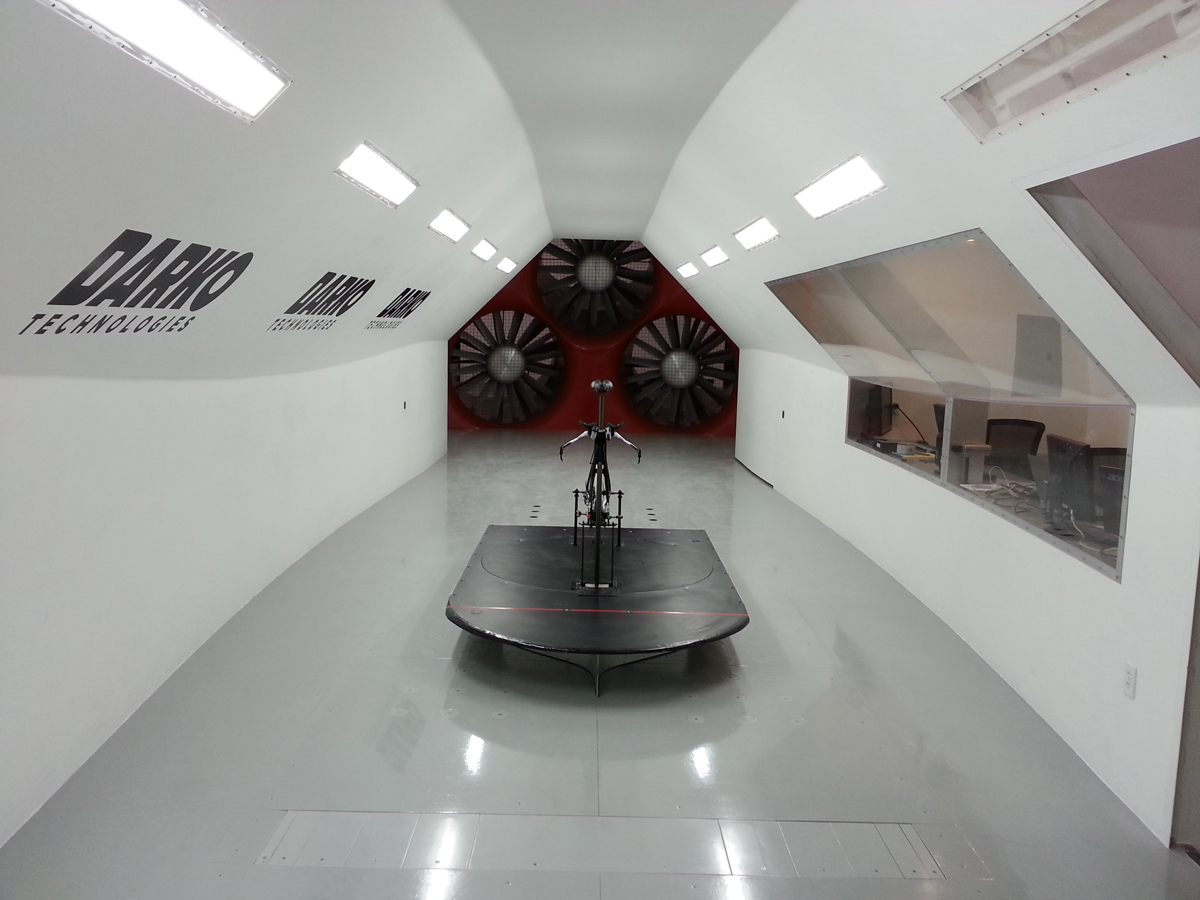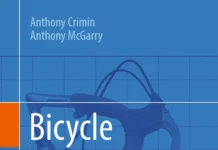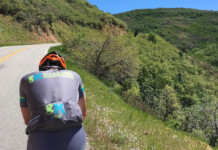By Mark Deterline – Layne Christensen’s new state-of-the-art wind tunnel brings to Ogden, Utah one of the most useful and oft elusive resources utilized by bike industry manufacturers, researchers and athletes. The imposing structure was built mostly by hand by Christensen himself, who benefitted from the counsel of some of the trade’s most renowned experts.
Operating under the company name Darko Technologies, the wind tunnel is largely the result of Christensen’s passion for the role aerodynamics play in human powered vehicle design, as well as his entrepreneurial knack for building businesses that fill technological and market voids.
 I’ll spare the reader technical aspects of the facility that we plan to cover in a future article, exploring instead its practical usefulness to cyclists and triathletes of all levels.
I’ll spare the reader technical aspects of the facility that we plan to cover in a future article, exploring instead its practical usefulness to cyclists and triathletes of all levels.
The wind tunnel is a holy grail of sorts. Particularly for cyclists strongly driven by ambition or a love of technology, who seek to optimize their performance in time trials, or seemingly for most triathletes, it represents a crucial point of reference.
Often this point of reference is accessed indirectly by inquiring minds who attempt to apply research findings from the tunnel to their own personal situation in the form of equipment and body positioning. For example, some studies claim that shorter cranks and narrower elbows provide better aerodynamics, so a rider could start there.
For those with the motivation and means to actually journey to a wind tunnel, a proposition now further within reach for Utahans and athletes in neighboring states, the experience can be sublime.
The wind tunnel is an ever present component of technical discussions and product validation. The testing that goes on in facilities around the world increases the appeal of components such as carbon wheels (e.g. Ogden neighbor ENVE’s SES models), as well as bike frames designed for road cycling (e.g. the Specialized Venge) and triathlon (e.g. the Trek Speed Concept).
Whether or not a rider actually takes the initiative to spend time on their bike(s) in a wind tunnel, there is a widespread longing for the opportunity to verify one’s own theories and how these theories apply to her or his own unique body and gear. Furthermore, as is often the case, there is a strong desire to dissipate uncertainty around such theories and one’s own unique situation.
I had the opportunity to spend multiple days in the Texas A&M wind tunnel with foremost expert John Cobb, who has worked with LeMond, Armstrong, and many other professional cyclists and triathletes there, as well as myriad amateur enthusiasts. It was also there that Cobb developed the designs of aero framesets for companies like Wilier Triestina, and aero helmets for Rudy Project.
Over the course of two full days, I closely observed how Cobb worked with several riders, tested multiple products, and then had the opportunity to undergo a number of testing runs in the tunnel myself, comparing drag numbers based on modified body positioning and the use if different equipment. For me personally, it was a powerful experience that shaped my perspective and applied science as a rider, and of course my work with other athletes.
Not only did I get a good feel for how my own and other riders’ body positioning affected airflow and drag at different angles, varying from zero (head-on) to 20 degree yaw-crosswind, I also learned how significant a role clothing played.
I remember Cobb pointing out ripples forming on a female road racer’s standard-issue skinsuit as she pedaled in the tunnel, the kind of skinsuit most racers utilize for criteriums and time trials. Considered plenty form-fitting by many, Cobb pointed out each ripple due to loose fit, explaining that each ripple created drag, and tallied an estimated drag total. Amazing. I’m 6’3”, and to achieve optimal clothing function I was wearing a size small national team speedsuit made of special materials and paneling. While wearing it, I couldn’t stand up straight off the bike, but in my aero position on the bike it was as tight – or tighter – than a second skin.
The instrumentation in the Texas A&M wind tunnel took 400 measurements per second, including barometric pressure, wind speed, wind direction, weight of rider and bike. Not only do you want to assess your aerodynamic profile in a direct headwind, it’s important to see how increased “frontal” area created by crosswinds affects one’s aero footprint.
Of course, the real benefit is assessing and improving aerodynamics, while ensuring that changes in equipment and positioning are not adversely affecting a rider’s biomechanics and therefore power output and efficiency. Moving around on the saddle creates turbulence and drag, as do moving body parts, especially a helmeted head.
Sobering are the effects – or the cumulative effect – these changes will have on one’s elapsed time over various distances. If you don’t go through such a process in a controlled environment, attempts at optimization remain speculative.
A wind tunnel is not the only tool or controlled environment/test one can use, but remains the ultimate validation for many of the world’s top manufacturers and professionals. Now that opportunity for validation is tantalizingly more accessible for any and every athlete in this region.
For more information and to schedule sessions in the Darko Technologies wind tunnel, call 801-648-7016 or visit darkotech.com.








